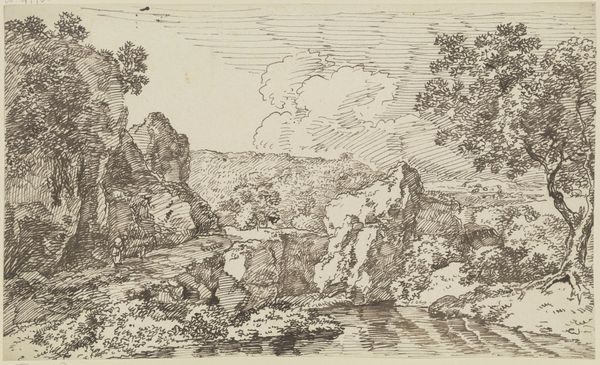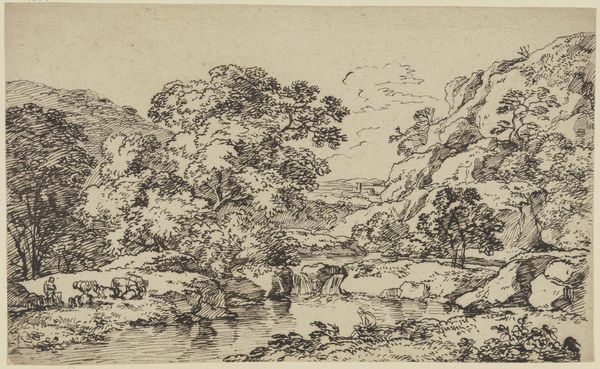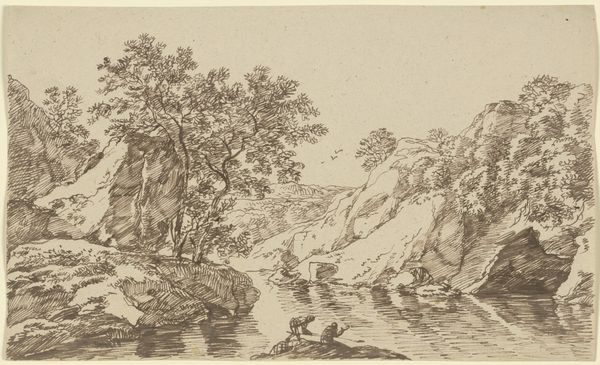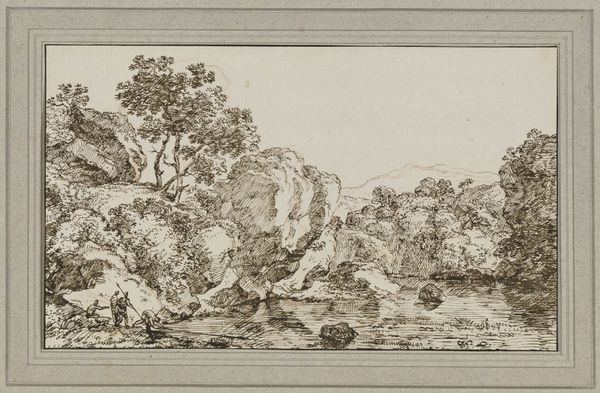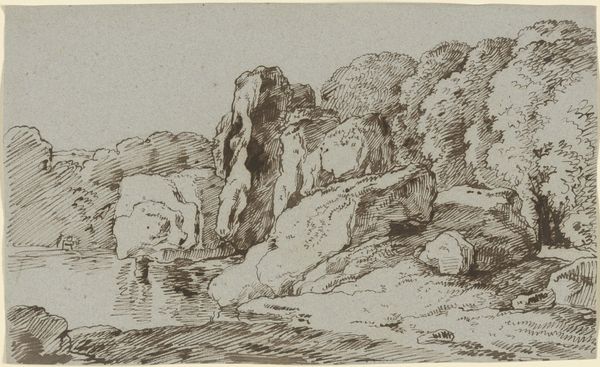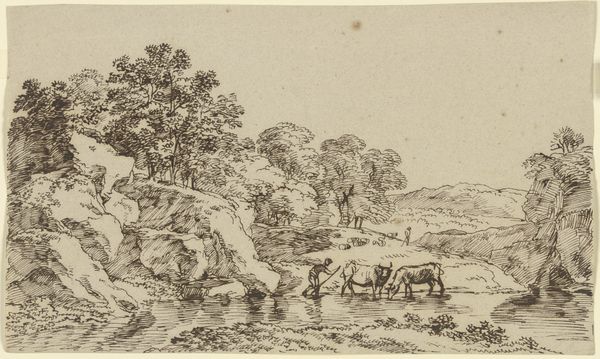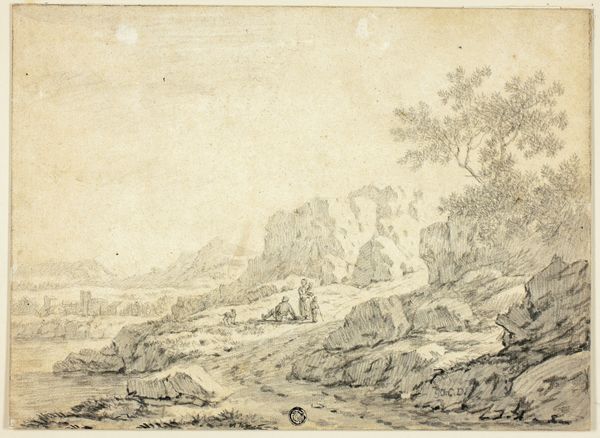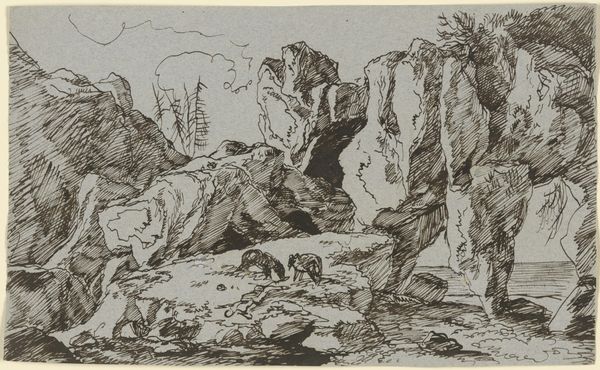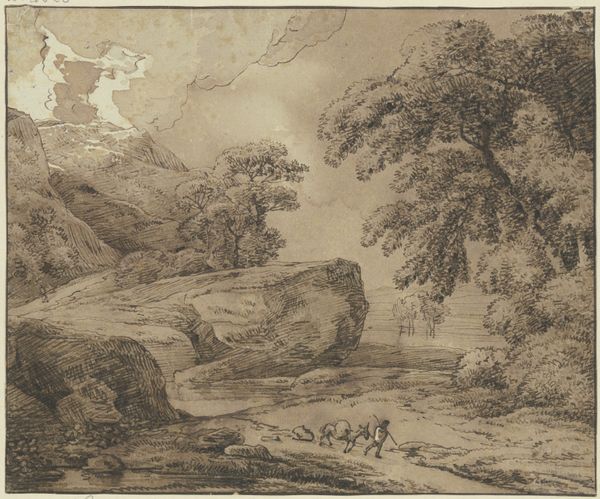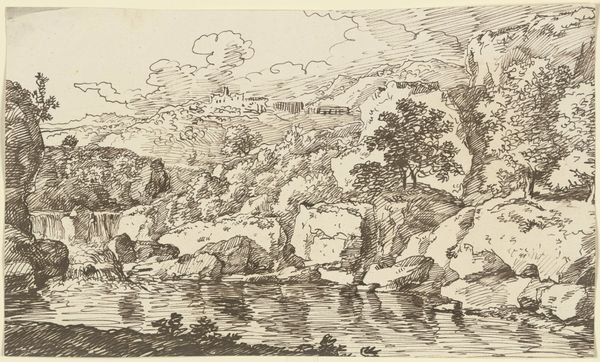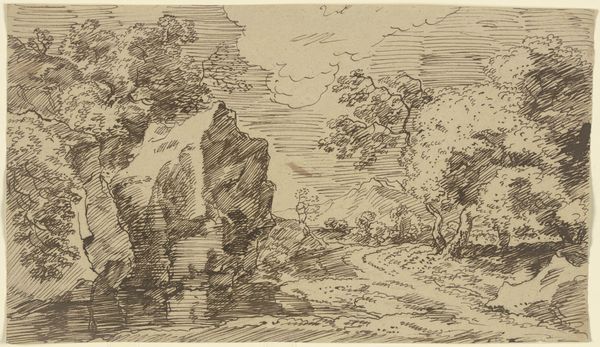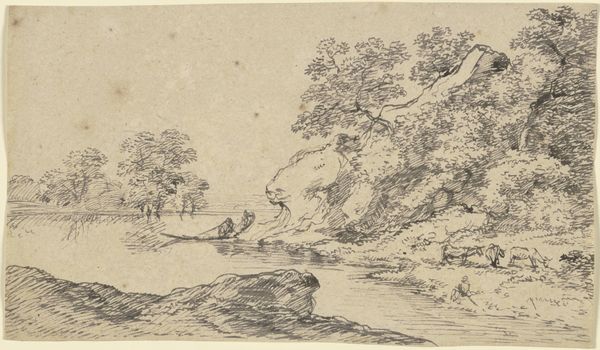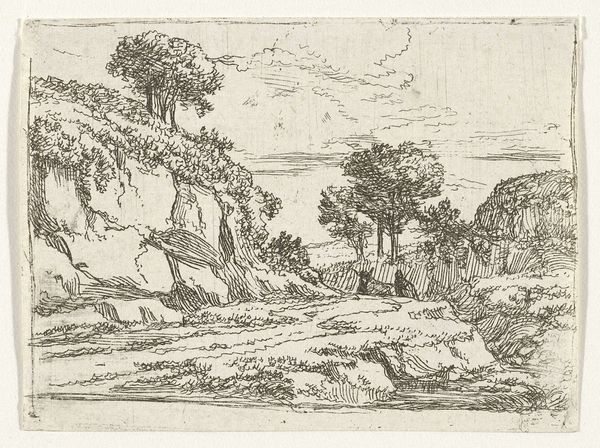
drawing, paper, ink, pencil, pen
#
drawing
#
pencil sketch
#
landscape
#
paper
#
ink
#
pencil drawing
#
romanticism
#
pen-ink sketch
#
pencil
#
pen
Copyright: Public Domain
Curator: Before us we have Franz Kobell's drawing, "Felsiges Ufer mit Hirte und Herde"—or "Rocky Shore with Shepherd and Herd." The precise date of its creation is unknown, but it now resides here at the Städel Museum. Editor: It strikes me as subdued, almost melancholic. The lines are delicate, creating a misty, dreamlike landscape. Note the strategic use of cross-hatching to build form. Curator: Kobell, working within a burgeoning Romantic movement, invites us to consider the individual’s place within nature and to meditate upon their relationship to each other. It's also, to my eyes, interesting to consider who the shepherd may represent. Editor: Symbolism aside, look at how the composition leads your eye! From the rocks in the lower right, across the shepherd, along the shore to the distant hills, it creates a carefully orchestrated sense of space, doesn't it? Pen, ink, and pencil on paper—it's a masterful display of tonal range using such minimal means. Curator: Absolutely. Considering his historical context, Kobell gives visual representation to social transformations; the rise of individualism during the enlightenment period and proto-nationalism perhaps manifest through his focus on the ‘common man’. We might even speculate how class anxieties about the nobility appropriating natural resources may speak through his subject choice. Editor: You're placing emphasis on his representation of society; yet to me, the drawing possesses an intrinsic quality: the delicate pen work mirrors the tranquil scene. The light isn't just light, but a defining structural element. The way he suggests texture in the rocks is incredible; each stroke meticulously placed. Curator: And perhaps within those intentional strokes lies a social commentary—a depiction of pastoral life that both idealizes it while quietly questioning power structures through representation. His chosen subject creates a place within cultural memory; a space that serves as a constant visual discourse. Editor: I see your point. For me, its brilliance lives in that harmony between technique and composition—how light and form combine. The artwork is ultimately evocative—a triumph in mastering line and tonal relationships. Curator: Yes. For me, Kobell has woven layers of potential narrative—of historical tensions—that the drawing opens for ongoing dialogue. Editor: And that's where art comes alive, doesn't it? Within our interpretations.
Comments
No comments
Be the first to comment and join the conversation on the ultimate creative platform.
